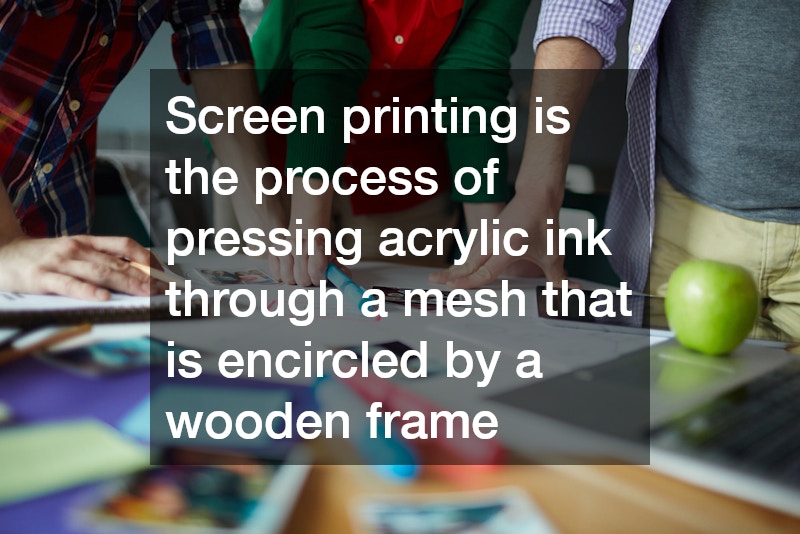Screen Printing Vs Digital Printing Which Should You Choose?

If you’re looking for ideas to make fun gifts for family and friends, you might decide to use screen printing. Once you purchase printing tools and materials to make the T-shirts, you’ll be able to use that equipment on multiple future occasions. If you’re part of a group, your group can also use your printing set to make team shirts or accessories.

According to Gathered, screen printing is the process of pressing acrylic ink through a mesh that is encircled by a wooden frame. To successfully do screen printing at home, you’ll need a supply of T-shirts in various sizes and colors, plus a printing frame and acrylic ink. You’ll need stencils to transfer your chosen design. You can probably find a tutorial online to show you a step-by-step method of printing.

Silk screen printing tips include using more than one step to print more than one color. As time progresses, you’ll learn how much pressure to exert on the ink to be sure it successfully transfers onto the cloth. If you become successful and decide to sell some T-shirts, according to Clip Art Hive, your pricing for screen printing should be approximately 150% of your printing costs.

When you think of custom screen printing, odds are the first thing that comes to mind is a T-shirt. But did you know a print company can use custom screen printing techniques for all sorts of applications?
How Does Screen Printing Work?
Screen printing, also called screen process or serigraphy, is a printing process in which a thickly textured ink paste is pressed through a stencil that has been attached to a mesh screen. (These screens used to be made of silk, which is why the process used to be called silkscreening.) The ink is then transferred onto a wet material, the “substrate,” in the areas not covered by the stencil.
What Are the Advantages of Screen Printing?
A print company can create effects using screen printing that would be difficult or impossible on a traditional press. Screen printing leaves a very thick layer of ink on the final product, which can lead to exceptionally vibrant colors (which is why the process is favored on dark T-shirts). Screen printing is done by hand on specialized presses, making it a form of art, as the printer can adjust each piece.
What Can Screen Printing Be Used For?
Custom screen printing can be used by a print company on many types of materials. Fabric is a popular choice, but screen printing can also be used on paper, cardboard, wood, leather, ceramic, glass, tile, plastic or nearly anything else imaginable.
This gives screen printing applications in a wide variety of industries in customizing objects ranging from balloons to medical devices to snowboards. A print company might use screening techniques for custom label printing, advertising banners or any type of custom graphics.
How Does Screen Printing Differ From Digital Printing?
Screen printed products are often mistaken for digitally printed products because both processes can be used on nontraditional items. For example, a T-shirt might be printed using either technique.
Both routes offer advantages and disadvantages. Digital printing is a good choice if only a few of the final product are needed, and can make the printing costs more affordable. Screen printing has higher minimum runs because custom stencils need to be created and more labor goes into the printing process. However, screen printing can provide more vibrant, artistic results.
Have you worked with a print company using either technique? Share your preferences in the comments.
See this reference for more: www.applevisualgraphics.com